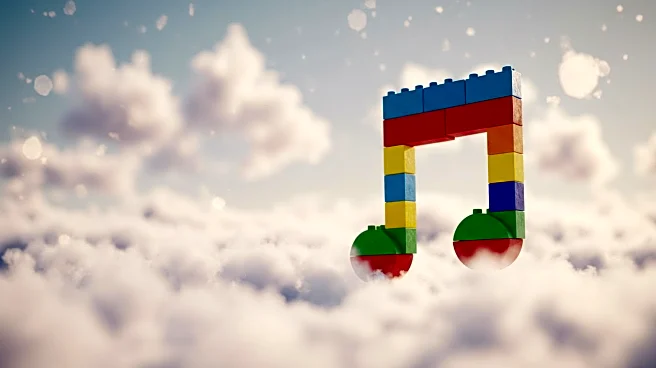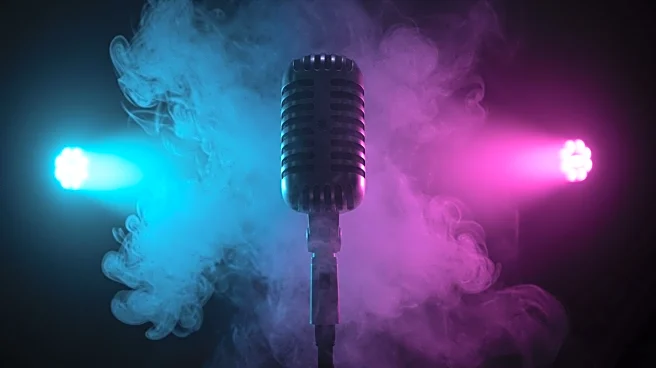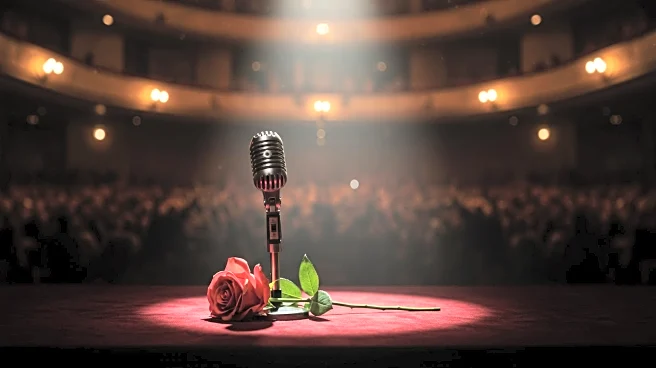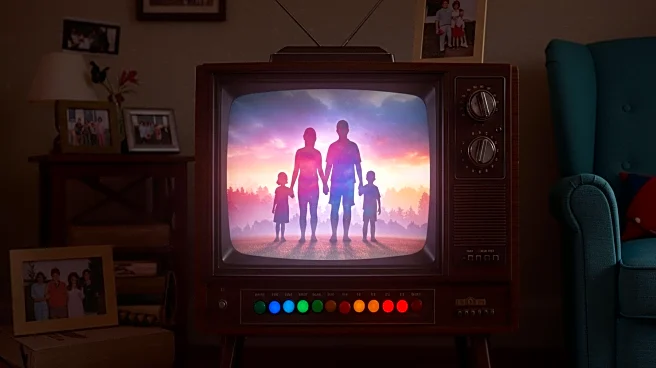What's Happening?
Musicians are increasingly drawing inspiration from their childhood experiences to create new music that captures the imagination and vulnerability of youth. The duo Disiniblud, consisting of Rachika Nayar and Nina Keith, released their debut album that seeks to reconnect with their childhood selves. The album features glitchy synths, delicate piano, and howling vocals, creating a magical soundscape. This trend is not limited to Disiniblud; other artists like Chicago trio Horsegirl and Australian EDM artist Ninajirachi are also exploring themes of childhood wonder in their music. These artists aim to evoke a sense of playfulness and limitless possibility, encouraging listeners to reconnect with their own youthful wonder.
Why It's Important?
This artistic movement highlights a shift in the music industry towards embracing authenticity and emotional depth. By revisiting childhood themes, musicians are challenging conventional norms and exploring creative freedom. This approach allows artists to break free from careerism and overthinking, fostering a more intuitive and innocent music-making process. The impact extends to listeners, who are invited to experience music as a space of revelation and limitless possibility. This trend could influence the industry by encouraging more artists to explore personal and nostalgic themes, potentially leading to a broader range of creative expressions and innovations.
What's Next?
As more musicians embrace this trend, it is likely that the industry will see a rise in albums that prioritize emotional authenticity and personal storytelling. Artists may continue to explore childhood themes, leading to collaborations and new genres that blend nostalgia with contemporary sounds. Music festivals and events might feature these artists, promoting a culture of creative exploration and emotional connection. The reception from audiences and critics will play a crucial role in shaping the future of this movement, potentially influencing how music is produced and consumed.
Beyond the Headlines
This trend raises questions about the role of nostalgia in art and its ability to heal and inspire. By reconnecting with their childhood selves, artists are not only exploring creative freedom but also addressing personal and societal issues. This approach can serve as a form of therapy, allowing musicians to process past traumas and celebrate their identities. The movement also reflects broader cultural shifts towards valuing emotional intelligence and authenticity, which could have long-term implications for how art is perceived and valued.











